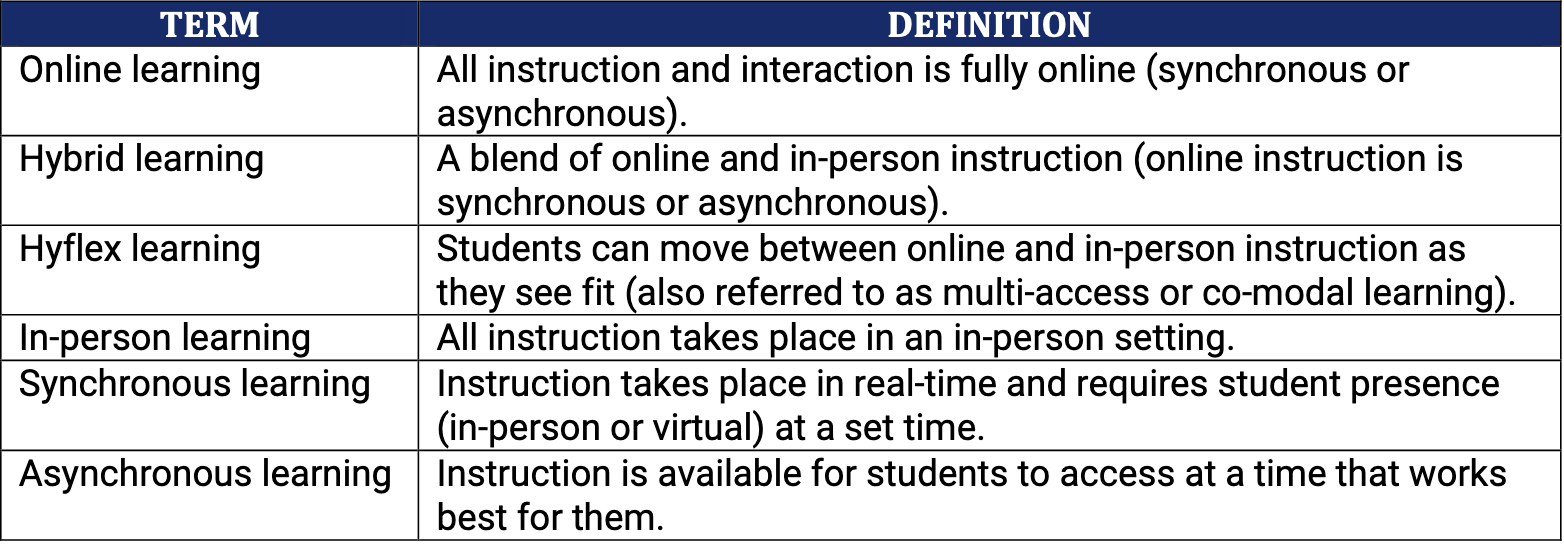
Apologies for my absence
I’ve not been at all active with my blogging this summer – been too busy playing golf and have just returned from a two week vacation in Newfoundland and Labrador, where I first met my wife 40 years ago. But now I’m back at my computer.
Defining digital learning
Johnson, N., Seaman, J. and Poulin, R. (2022) Defining key terms related to Digital Learning WCET/Canadian Digital Learning Research Association/BayView Analytics
This publication, based on a survey of nearly 1,000 faculty and just over 1,000 administrators, indicates a very high degree of agreement on most of the terms used to signify digital learning, as follows:
All these terms, except hyflex, received over 90% agreement from those surveyed. The definition for hyflex was agreed with by just over 70% of respondents. This is probably because there is still some confusion about what hyflex actually means and the difficulty of being fully flexible with regard to student participation.
Why are these definitions important?
Mainly because students need to know what the requirements are for a course. Do I have to come to campus – if so, how often? Do I need a computer? Do I have to be available at certain times? These definitions on their own won’t answer these questions, but they will allow administrators and faculty to be more consistent and clearer in naming courses.
Is it enough?
Now I need to declare an interest here. I was until recently Chair of the Board of the CDLRA, one of the main partners in this study. My main goal was to identify the proportion of course enrollments that are delivered fully online each year, and also if possible the extent of hybrid learning. These definitions are necessary but not sufficient for this purpose, but they are essential steps on the way to achieving such goals.
However, my goal won’t be possible until all institutions classify their courses consistently. Hybrid learning is a particular challenge because the mix of on-campus and online learning can vary considerably, and more importantly this is a decision usually made by individual instructors and not necessarily tracked at an institutional level.
The one caveat I would have is that the definitions do not distinguish sufficiently between online and in-person synchronous learning. I would prefer the definition to be synchronous online learning, as synchronous in-person learning is included within in-person learning. Also, the design of courses is now so dynamic that rigid definitions are likely to become outdated quickly. Nevertheless, given the amount of consensus about these definitions, they should be standard at least for the next few years.
Given the strong consensus on definitions, I hope all registrars will now require instructors to classify their courses according to the definitions above- at least until the next wave of innovation.









 Dr. Tony Bates is the author of eleven books in the field of online learning and distance education. He has provided consulting services specializing in training in the planning and management of online learning and distance education, working with over 40 organizations in 25 countries. Tony is a Research Associate with Contact North | Contact Nord, Ontario’s Distance Education & Training Network.
Dr. Tony Bates is the author of eleven books in the field of online learning and distance education. He has provided consulting services specializing in training in the planning and management of online learning and distance education, working with over 40 organizations in 25 countries. Tony is a Research Associate with Contact North | Contact Nord, Ontario’s Distance Education & Training Network.


Hi Tony, models and definitions have been of serious interest to us at Open Polytechnic as we anticipate a network of vocational education imminently merging. This might be of interest, presented at PCF10 in Calgary last month: https://oasis.col.org/items/48ef9489-21c7-4a92-9cee-1bf01e3d1bba/full